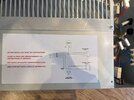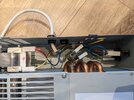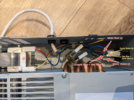- Joined
- 21 Sep 2023
- Messages
- 31
- Reaction score
- 5
- Country

I've just installed a new Myson Kickspace 600 plinth heater. The heating side of it is working fine - gets good and hot throughout all the pipes. In terms of the electrical connection, it works fine before I turn the heating on. In Summer mode, the fan switches on successfully. However, after a bit of trial and error, it seems that when switched to Winter mode and the heating is turned on, the fuse blows when the heater reaches temperature and the fan never turns on.
I've tried both hardwiring it to a switched FCU as well as putting a 3 pin plug on the flex (with a 3A fuse). Peeking inside the unit, I can't see any damaged wires or any obvious damage.
What can I do to further isolate the problem and go about fixing it?
I've tried both hardwiring it to a switched FCU as well as putting a 3 pin plug on the flex (with a 3A fuse). Peeking inside the unit, I can't see any damaged wires or any obvious damage.
What can I do to further isolate the problem and go about fixing it?



